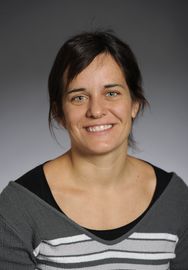非常抱歉,
你要访问的页面不存在,
非常抱歉,
你要访问的页面不存在,
非常抱歉,
你要访问的页面不存在,
验证码:

职称:Professor, Physics
所属学校:Carnegie Mellon University
所属院系:physics
所属专业:Physics, General
联系方式:412-268-1888
Ph.D., University of Cambridge
It is now well-established that black holes are an important feature of our cosmic environment. Stellar-mass black holes number in the millions in every galaxy; there is now conclusive evidence that black holes as massive as a billion suns reside at the centers of most galaxies. Black holes are thought to power the most energetic phenomena in the Universe from quasars to, perhaps even Gamma-Ray-Bursts. My research interests focus on studies of black holes encompassing a wide range of topics in both High Energy Astrophysics and Cosmology. They include theoretical studies of the interplay between black hole growth and galaxy formation and investigations of various aspects of the physics of accretion disks around black holes. Cosmological simulations of black hole formation: I am currently involved in developing a new prescription in the context of hydrodynamical simulations of galaxy formation which, together with star formation and supernovae feedback, follows black hole accretion and its associated feedback in the center of galaxies. This is a novel attempt within models of galaxy formation to track self-consistently the growth of supermassive black holes and the evolution of the galaxy itself. Galaxy formation and black hole growth are mutually intertwined processes, requiring joint theoretical modeling to be meaningfully addressed. 21cm tomography and foregrounds: An exciting future probe of the epoch of reionization will be 21cm tomography of the neutral hydrogen in the Intergalactic medium and in gravitationally collapsed systems. I have been modeling the contaminating foreground radiation to the primary 21 cm radiation due to galaxies which produce radio emission and free-free emission and extended sources include radio halos and relics. We are using cosmological simulations and are producing simulated sky maps for the upcoming Lofar and PAST facilities. Neutrino transport around black holes and Gamma-Ray Bursts: In recent years the exciting field of Gamma-Ray Bursts has opened up to the studies of black hole accretion. Rapid, hyper-Eddington accretion is likely to power the central engines of Gamma-Ray Bursts. In these extreme conditions of densities and temperatures the accreting material is cooled by neutrino emission rather than by radiation. I have been working on deriving dynamical solutions for neutrino dominated accretion flows. Accretion models and X-rays: Accretion of matter onto a black hole is able to liberate large amounts of its binding energy. By studying the power output from accretion disks, we are able to probe the deep gravitational potentials around black holes. Nearby black holes however, are much less luminous than active galactic nuclei in distant galaxies. I build models for the emission from nearby black holes using Chandra Satellite and XMM-Newton observations.